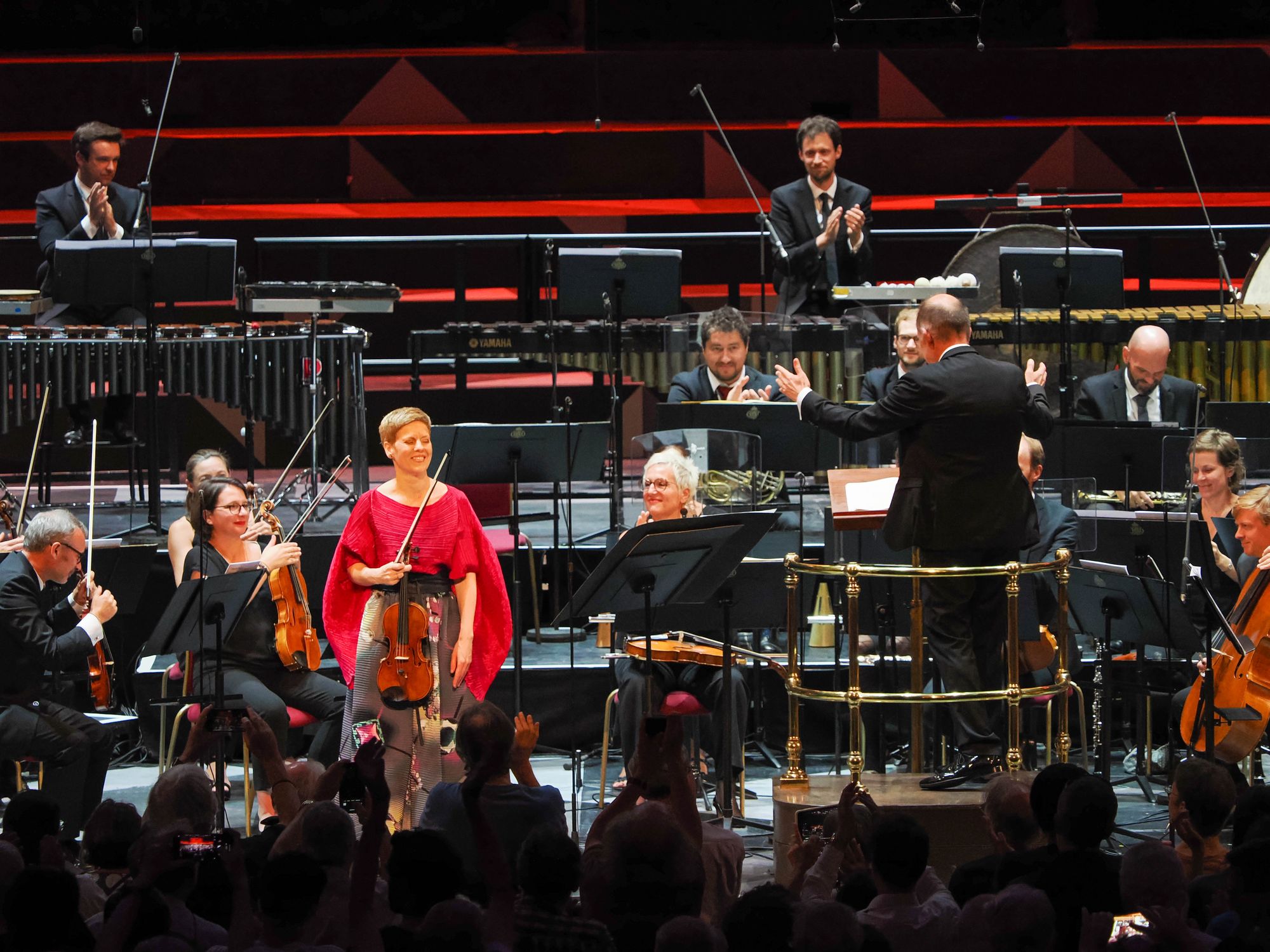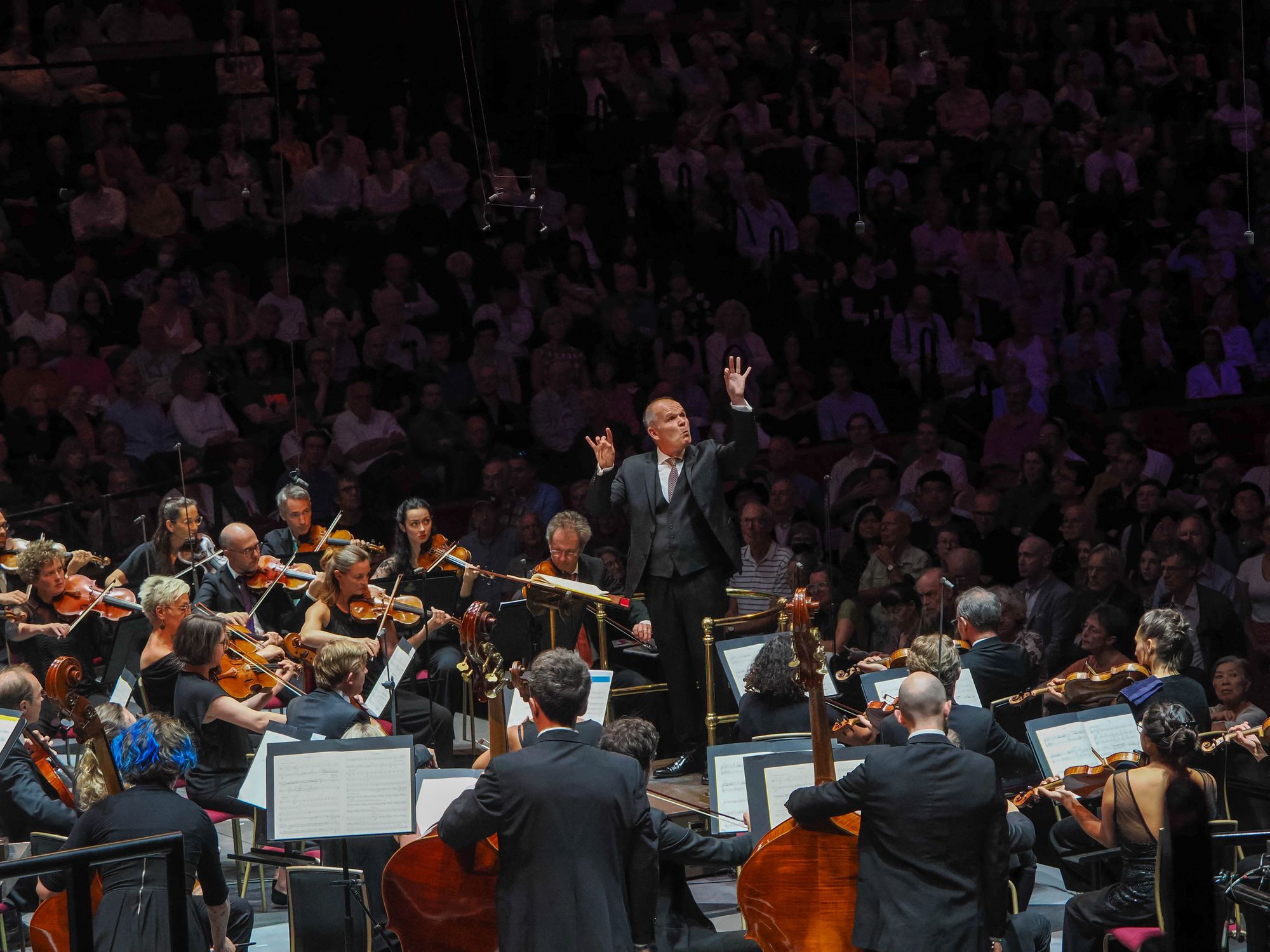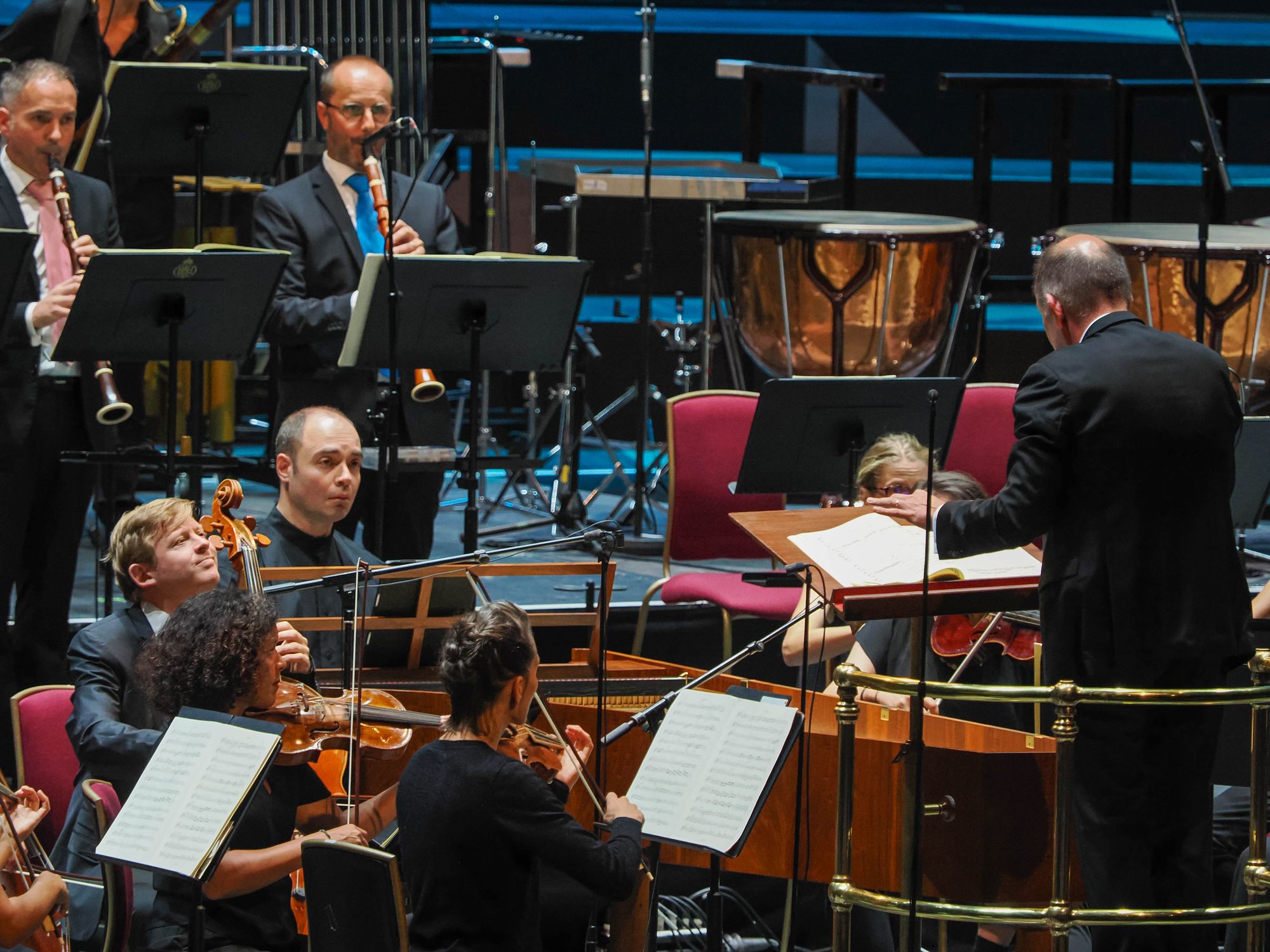Prom 47 review: Ligeti & Mozart
A unique Prom in so many respects

PROM 47: Ligeti & Mozart Isabelle Faust (violin); Alexander Melnikov (fortepiano); Les Siècles / François-Xavier Roth. Royal Albert Hall, 20.08.2023
Ligeti Concerto Românesc (1951). Violin Concerto (1989-93).
Mozart Piano Concerto No. 23 in A, K 488 (1786). Symphony No. 41 in C, K 551, ‘Jupiter’ (1788).
In an interview, François-Xavier Roth talks about attracting people to Ligeti ‘through Mozart ... Mozart is such a positive figure … that people who are a little bit afraid of Ligeti have a door to come to Ligeti’s music.” It was Roth who founded Les Siècles in 1993 (and his ensemble is thus celebrating its 20th anniversary this year). The orchestra uses the most appropriate instruments it can find for the pieces; and here we had Ligeti (performed at A=442 Hz) and Mozart (performed at A= 430 Hz, and how we heard the difference in the tuning-up that prefaced the Mozart. A different leader in each half, too.
This was a long Prom – with much shuffling around of the stage, which made it feel quite disparate. That, and juxtaposing Ligeti in the first instance and Mozart in the second (presumably because if reversed, many might have left at the interval?) gave something of the flavour of two concerts next to each other rather than one composite entity …
The first piece by Ligeti was, amazingly, receiving its first performance at the Proms: the Concert Românesc of 1951. The work uses source material from Transylvania. It was rejected by the Hungarian Composers’ Union – Ligeti felt this was because of the dissonances, despite their authenticity. The first two movements are arrangements from Balada si joc (Ballad and Dance) for two violins from 1950. Certainly, the second movement has a distinct post-Bartök tinge. The calls, onstage and the off, of two horns imitating a bucium (a Romanian alphorn) were most effective, with the natural tuning and that feeling of slight roughness one experiences from the F-horn (it is written for Horn in F in the score and one assumes was played on the F side). The stuttering trumpet fanfares that launch the jittery finale climax in a remarkable torrent of dance music led by the solo violin (leader François-Marie Drieux). The neighbour-note figures circling around a central note threaten to spiral off into later Ligeti, perhaps (or maybe that’s wishful thinking on my part). An attractive piece, performed with zest and verve by Les Siècles.

The Ligeti Violin Concerto dates from much nearer our time (1989-93). It uses microtonal music and refers to musics as far-ranging as Papua New Guinea, Laos, and Cambodia plus influences from composers as varied as Thelonius Monk and Harry Partsch. It was a pity we had a mibile phone interruption immediately before the opening (twice) especially given its ultra-quiet opening. The challenges for the soloist are enormous, and Isabelle Faust has a phenomenal view of the piece. She understands it completely, from the repeated arpeggios of the opening to the choice of cadenza. It is Interesting to note that the leader (still Drieux) has a lot to do here. Faust’s sound is glorious; as is the unusual, otherworldly sound of the ocarina, heard here presenting a weird, Ligetian chorale. Interesting, too, that there are more overtly Romantic lines here, too, in the great Passacaglia. Any folk music here is a world away from the earlier piece: the Violin Concerto is a fully-integrated masterpiece. Les Siècles played with miraculous command (the rhythmic complexities are myriad); the performance buzzed with life and erupted with excitement. Parts o t he first movement found Faust playing (appropriately for her name) like the violinist from Stravinsky’s Soldier’s Tale, just multiplied a thousand-fold.; all of which meant the deep, burnished, fully solo lines stood out with heightened expressivity. The cadenza, by Faust’s friend and colleague the composer Oscar Strasnoy, was a masterclass in violinistic excellence, and fitted the piece like a glove. A remarkable performance of a remarkable piece.

One encore: ‘Doloroso’ by György Kurtág (1989) from his Signs, Games and Messages, perfectly chosen, perfectly performed, and perhaps winking at the recent performance of Endgame/Fin de Partie. Isabelle Fause is a force of nature. Here is a video of Faust in the ‘Doloroso,’ this from October 29, 2021, in Munich:
So to Mozart’s Piano Concerto No. 23, played on a fortepiano – the one owned by Wigmore Hall, a modern copy of an 1819 Conrad Graf instrument (Vienna), chosen for its volume as well as its tone. But Melnikov was placed right in the middle of the orchestra. Even from the stalls and not too far from the stage, it did not work, the fortepiano too quiet pretty much throughout. (it sounds better in the broadcast than it did in the hall). The stars here were the members of Les Siècles, most notably the woodwind and horns, standing as one group looking as if they were ready to burst into some Harmoniemusik. In some ways, they did, offering the perfect chamber music. A pity, too, that Melnikov was not so reliable; like Schiff only recently, there were sploshes of sound that detracted from the ongoing flow. The plethora of audience coughs in the central Adagio seemed to point to an audience restless (or on edge in the light of the performance?). Concentrating on the orchestra was the key: Melnikov was often sounded literal and disengaged. Interesting that although he adds his own decorations (although not as convincingly in this repertoire as Robert Levin), Melnikov left the long, sustained notes over pizzicato strings alone, a daring choice. Whilst it underlined the modernity of that moment, it also seemed inconsistent. The finale was splashy again from the keyboard, against the brilliance of the orchestra. Some decidedly cheeky decorations from Melnikov towards the end were not enough to save the day.

Far better was the performance of Mozart’s final symphony. Roth took risk after risk, and they all seemed to pay off, lingering dangerously on the silences separating those forceful opening gestures before offering a suave contrasting subject. There was a distinctly operatic aspect to this, particularly perhaps in the coda idea of the exposition. The Andante cantabile contained lines so remarkably together (and dynamically in unison, too) that it seemed impossible, while the one-in-a-bar Menuetto nearly had swing to it. But it was the finale that really triumphed, a celebration of counterpoint on the grandest, most ceremonial scale. Memories of a performance of this symphony by Tennstedt and the London Philharmonic Orchestra many years ago at the Proms came flooding back - the effect of the additive imitative entries was similar (Friday the 13th (!) of September 1985 to be exact).
There is a video of Roth rehearsi mg another orchestra, the Bavarian Radio Sympohny Orchestra, in the opening of the “Jupiter’. He speaks in German, but for German speakers, this is very revealing, and everyone sure can feel his energy and belief in himself and in the music:
A unique Prom in so many respects. It is the Ligeti Violin Concerto and the Mozart ’Jupiter’ that remain its finest moments, but I for one would not be without the first Proms performance of the Concerto Românesc.
The Prom is available at the time of writing at BBC Sounds. Les Siècles’ Liigeti disc is currently 11% discounted at Amazon (it includes the Six Bagatelles and the Ten Pieces for Wind Quintet, as well as the Chamber Concerto):
